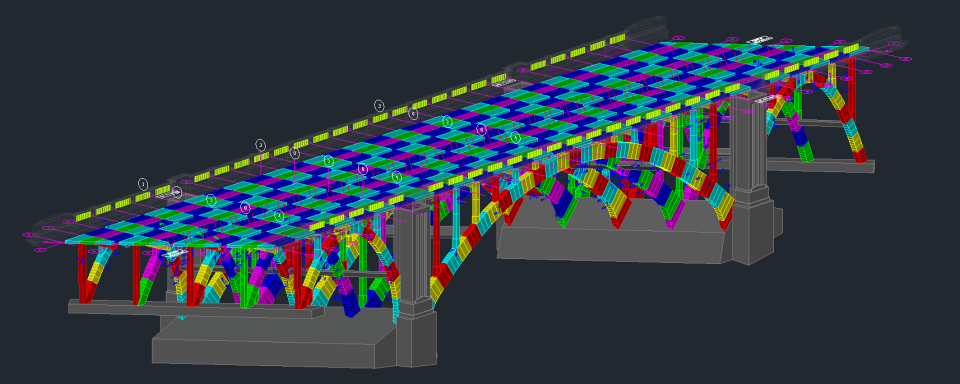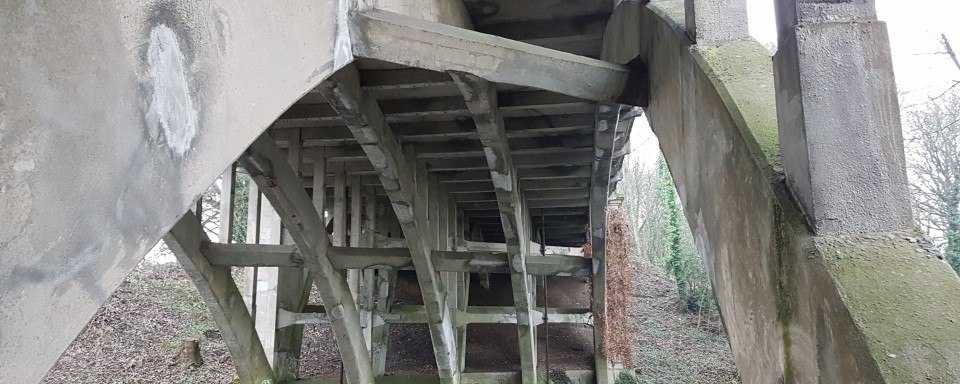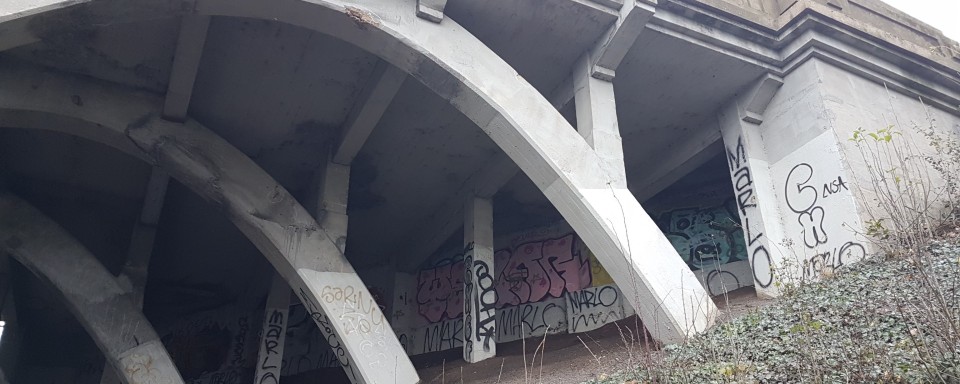Calverley River Bridge
Client
BAM Nuttall for Leeds City Council
Project Description
Calverley River Bridge is a skewed three-span, reinforced concrete arch structure with open spandrels and a continuous reinforced concrete deck slab. Each span comprises five principal arch ribs, which support columns, which in turn support transverse downstand beams in the bridge deck. At the arch springings, reinforced concrete block foundations are supported by concrete piles. Situated in northwest Leeds, the bridge carries the A6120 link road over the River Aire. Constructed in 1929, the most recent Principal Inspection identified numerous concrete defects which required repair to arrest further deterioration of the structure. Due to the river and the arched nature of the structure, access scaffolding was required to be supported from the bridge to undertake the repairs. A staged assessment was undertaken by Cass Hayward to ensure that the bridge had sufficient capacity to support the scaffold loading during the repair works. We also developed a schedule of repairs and defect location drawings and repair details for 1,335 concrete defects.
Cass Hayward Role(s)
- Phased assessment of the bridge divided into four stages.
- Stage 1 - Initial assessment based on the ‘as-built’ condition ignoring any existing defects but including previous strengthening works.
- Stage 2 - Allowance for concrete defects made in the second stage of the assessment.
- Stage 3 - Scaffold loading and reduced section capacities during repair works (due to concrete breakout) included in third assessment stage.
- Stage 4 - Assessment updated to consider the post-repair condition.
- Detailed review of previous site investigation work by specialist contractors.
- Site visits to ascertain key information missing from archive drawings.
- Schedule of repairs developed for 1,335 concrete defects.
- Defect location drawings and repair details developed for typical defects at arch rib, deck soffit, cross beam, and column arris.
- Involvement in sequencing and repair optimisation workshops with specialist repair contractors to refine the repair methodology to reduce costs for the client.
Project Statistics
- Circa 100-year-old reinforced concrete bridge on key arterial route on outskirts of Leeds.
- Highly skewed, 3-span monolithic structure comprising 15 arches and over 100 reinforced concrete columns.
- 1,335 concrete defects.
Special Features
- Complex multi-phase assessment.
- Petrographic analysis of concrete cores.
- Worst credible concrete strength determined from core testing.
- Previous strengthening works included in assessment.
- Consideration of local and global stability of the structure during concrete breakout works for repairs.
- Involvement in repair phasing to improve efficiency and reduce costs for the client.










